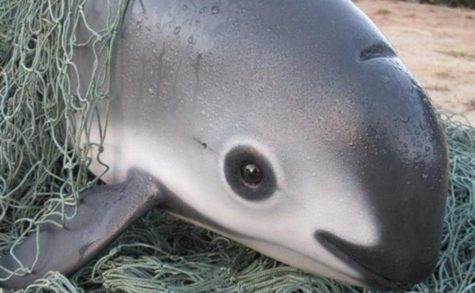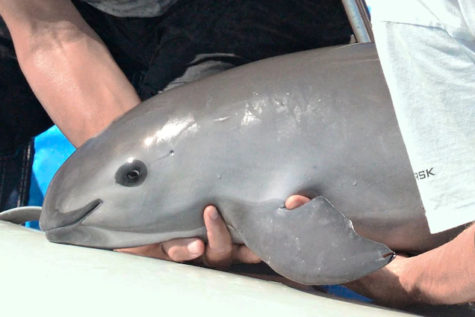The Vaquita is the most endangered cetacean in the world
The Disappearance of the World’s Smallest Cetacean
July 15, 2022
The vaquita, the smallest cetacean, is the most endangered of its kind. Why haven’t most people heard of this animal? They’re shy mammals who prefer to stay hidden which have a small number of members alive. They were only discovered in 1958, and only about 10 individuals are living in the wild!
So, what is a cetacean exactly? Cetaceans are animals such as whales, dolphins and porpoises. These animals consist of any marine mammals that developed from land to water, which happened about 12 million years ago. It just so happened that the vaquita turned out the smallest, and the most endangered.
The main cause of their endangerment is due to people’s use of fishing nets, spears, and the fact that they’re confined to one area in the world. It’s up to us, as people, to provide aid to their situation; because, if fishing nets and spears hadn’t been introduced to where vaquitas inhabit, they wouldn’t be threatened to go extinct. These animals have been on this earth for about 4.8 million years with no previous issues.
Vaquitas were discovered in 1958 with a total population of 2,000 – 4,000 in the 1900’s as a whole. Now, their numbers have reduced to 0.33% of that population in 2022.

The main reason for their endangerment is the use of fishing spears and nets. Large demand for Totoba, a fish whose swim bladder is in high demand in China, are caught by gillnets, a type of fishnet, which is exceptionally lethal for vaquitas when they become entangled in the mesh. It is illegal to use such gillnets in this region, but some continue to do so. The use of gillnets affects marine life beyond vaquitas, including whales, turtles, dolphins, and more.
Vaquitas serve an important part in the ecosystem by acting as both predator and prey. Their diet consists of small fish, squid, and crustaceans, but they mainly function as an essential food source to many predators, such as many members of the shark family. Without vaquitas, their interdependent ecosystem would become unbalanced. Their predators would starve and the population of vaquita’s prey would become overpopulated.
They specifically live in the northern part of the Gulf of Mexico, making their range of habitat small compared to other cetaceans. They don’t travel far because it becomes inhabitable for them.

Unarguably cute, vaquitas’ black, gray and white patches are truly unique. Just because they have these traits isn’t a reason to keep them living; it’s the fact that, once again, it is mankind’s fault for putting them in danger of disappearing. Doing something to help these creatures is the most humane thing to do at the moment to aid their revival. Despite everything, vaquitas still choose to smile at the world that is slowly making them fade.
To prevent any further harm to vaquitas, you can sign a petition to protect the area they live in.
